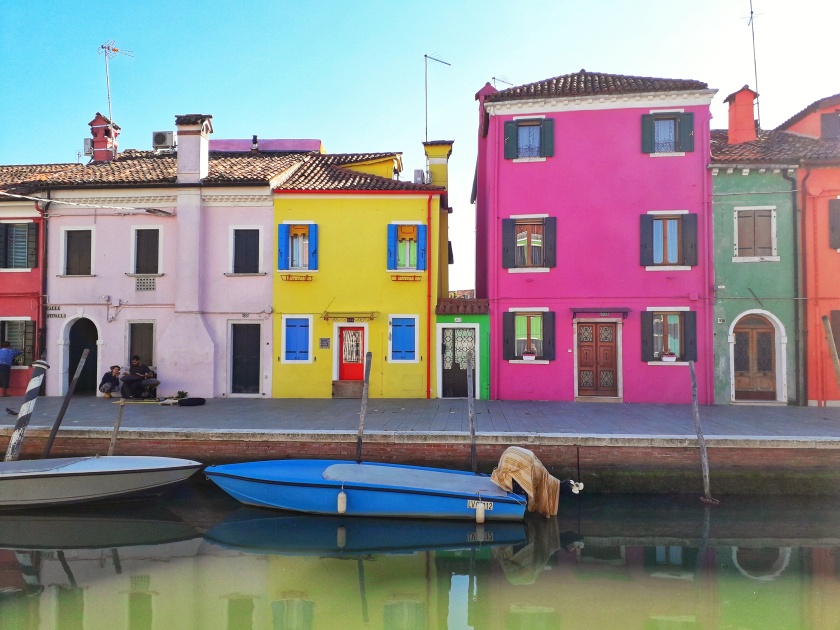It’s 1895 and, after the death of her mother, 16-year-old Gemma Doyle is shipped off from the life she knows in India to Spence, a proper boarding school in England. Lonely, guilt-ridden, and prone to visions of the future that have an uncomfortable habit of coming true, Gemma finds her reception a chilly one. She’s not completely alone, though… she’s being followed by a mysterious young man, sent to warn her to close her mind against the visions.
It’s at Spence that Gemma’s power to attract the supernatural unfolds, as she becomes entangled with the school’s most powerful girls and discovers her mother’s connection to a shadowy, timeless group called The Order. Her destiny awaits… if only Gemma can believe in it.

I was recently inspired to re-read Libba Bray’s first novel, A Great and Terrible Beauty – a book I haven’t read since my actual teens, which were, um, a while ago – by one of Sophie @ Blame The Chocolate’s recent Theme Thursdays. I am so glad I did. I’m such a fan of Bray’s more recent works, so it’s hardly a surprise that returning to her back catalogue was a joy.
A Great and Terrible Beauty is a book consumed by the question of power: what different power looks like to different kinds of people, who has it, how they use it, and whether it is ultimately a force for good or for destruction. For Gemma and her friends – a group of 19th century schoolgirls whose options are, to put it lightly, limited – it’s a question they are consumed by.
“No one asks how I am
doing. They could not care less. We’re all looking glasses, we girls, existing
only to reflect their images back to them as they’d like to be seen. Hollow
vessels of girls to be rinsed of our own ambitions, wants, and opinions, just
waiting to be filled with the cool, tepid water of gracious compliance.
A fissure forms in the vessel. I’m cracking open.”
Each of the girls is confined by the expectations placed on them by the restrictive society they’re growing up in. For Gemma, Felicity and Pippa, girls born rich and upper class, their only options are marriage and children. For Ann, the only scholarship student at Spence and a poor orphan, it’s a life of servitude as a governess or similar that awaits when she leaves school. Though they are all definitely interested in romance – and deal with the shame and confusion that comes along with the desire to express their sexuality as a Proper Young LadiesTM – the often forced marriages to much older men they see their friends doomed to are very far from the lives they have fantasised about. Like, sexual freedom isn’t even a concept yet, let alone a conversation you’re allowed to have with your friends.
So when they discover The Realms – a magical alternate universe that only they can access, a place in which everything they wish for becomes a reality – you can imagine their response.
Um, they want to live there.
But accessing the realms – something that the gang can only do with the help of Gemma’s magical powers – comes with consequences. There is a creeping darkness to the power they’ve accessed – one that raises some interesting questions about what parts of themselves they are willing to sacrifice to gain the control over their destinies that society will not allow them.
“Felicity ignores us. She walks out towards them, an apparition in white and blue velvet, her head held high as they stare in awe at her, the goddess. I don’t know what power feels like. But this is surely what it looks like, and I think I’m beginning to understand why those ancient women had to hide in caves. Why our parents and teachers and suitors want us to behave properly and predictably. It’s not that they want to protect us; it’s that they fear us.”
There is a simmering rage that underscores this series. From the eventual villain – who I won’t go into because spoilers – to Felicity’s explosive personality and Gemma’s dogged need for solutions to the story’s various mysteries, no matter the cost, each of the characters is somehow on the edge of a precipice to some unknown darkness. It lends the book a sense of anxiety that the persistent wrongness of the realms – which are, btw, full of strange and grotesque characters the girls are peculiarly unbothered by (at least, initially) – only increases. One of the lessons I think we all have to learn the hard way is that it’s shocking how much you can ignore when you feel like you’re onto a good thing. But those things you’re ignoring? They’re growing – something as the reader you’re waiting for the Gemma and her friends to realise all along.
It’s creepy and delicious. I know that in the blogosphere we spend most of our time on new releases, for obvious reasons, but if there was ever an author whose back catalogue it’s worth revisiting it’s Bray. The Diviners didn’t come out of nowhere. For Bray, ghostly territory has been well traversed for a good few years now.



